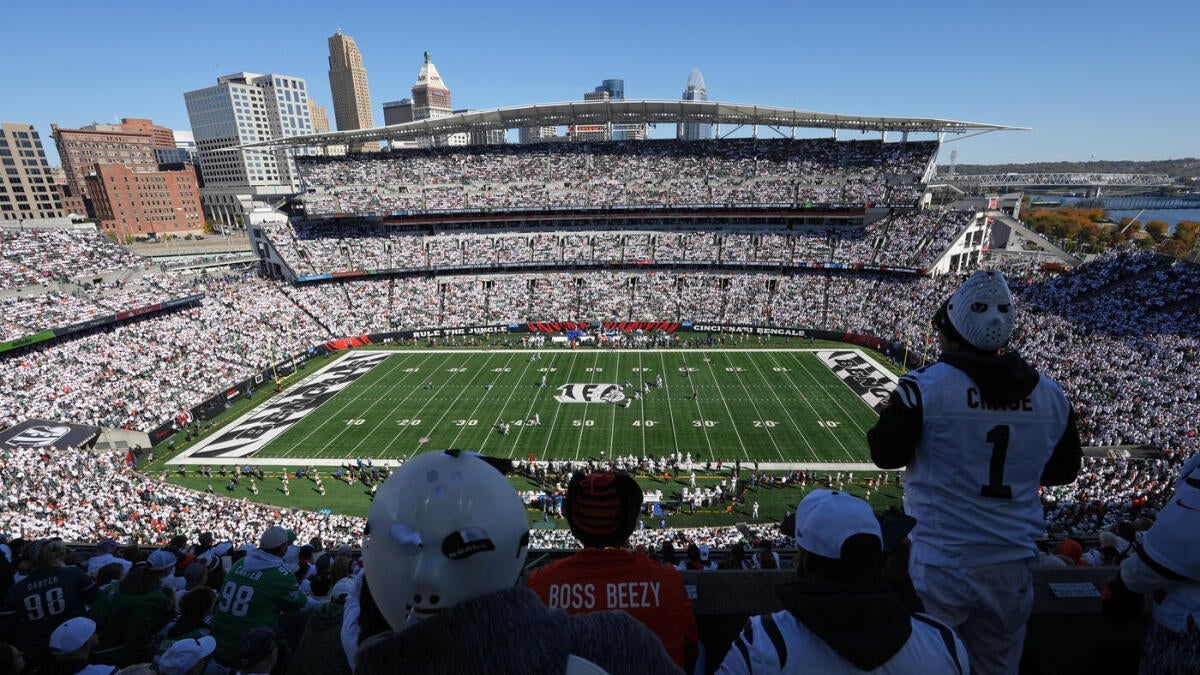The Cincinnati Bengals’ Paycor Stadium Lease Extension: A Comprehensive Analysis
Introduction: A New Era for the Bengals and Cincinnati
The Cincinnati Bengals have solidified their future in the Queen City with an 11-year lease extension at Paycor Stadium, ensuring their presence in Cincinnati through at least 2036, with options extending to 2046. This landmark agreement is more than just a business deal; it is a testament to the team’s commitment to the community, a catalyst for economic growth, and a promise to preserve the Bengals’ legacy in the region. The lease extension, coupled with a $470 million renovation plan, underscores the mutual dedication of the Bengals and Hamilton County to maintaining a world-class stadium and fostering a thriving football culture.
The Lease Agreement: Stability and Long-Term Vision
The lease extension, finalized in August 2025, provides the Bengals with a stable home for the foreseeable future. The 11-year term, running through June 30, 2036, includes two five-year options that could extend the agreement to 2046. This long-term stability is crucial for both the team and the county, allowing for strategic planning, investment, and growth.
The agreement also addresses the financial responsibilities of both parties. Hamilton County will contribute $350 million to the renovation fund, while the Bengals will cover the remaining $120 million. This equitable sharing of costs ensures that the financial burden is not solely shouldered by taxpayers, fostering a sense of fairness and public trust.
Economic Impact: The Bengals as a Regional Economic Engine
The Bengals’ presence in Cincinnati is a significant economic driver. The team’s games generate substantial revenue through ticket sales, merchandise, concessions, and tourism. Fans traveling from across the region fill hotels, restaurants, and local businesses, creating a ripple effect that benefits the entire community.
Beyond the direct economic impact, the Bengals contribute to Cincinnati’s image and reputation. A successful NFL team attracts businesses, talent, and investment, enhancing the city’s profile and making it a more desirable place to live, work, and visit. The extended lease agreement ensures that these benefits will continue to flow into the community for years to come.
Renovations: Enhancing the Fan Experience and Stadium Competitiveness
The $470 million renovation plan is a critical component of the lease extension. While Paycor Stadium is relatively young compared to other NFL venues, it is essential to keep it updated to meet the evolving needs of players, fans, and sponsors. The renovations will likely include upgrades to seating, concessions, restrooms, and technology infrastructure.
These improvements are not merely cosmetic; they are essential for enhancing the fan experience and generating revenue. Modern stadiums offer a wide range of amenities and premium seating options that attract high-spending fans. By investing in these upgrades, the Bengals can increase their revenue streams and remain competitive with other NFL teams.
Addressing Criticisms: A Fair and Equitable Agreement
The original stadium deal was widely criticized for being overly favorable to the Bengals. The new lease agreement addresses these concerns by requiring the team to contribute a portion of the renovation costs. This more equitable sharing of financial responsibility is important for building public trust and ensuring that the agreement is perceived as fair to taxpayers.
The agreement also includes provisions that protect Hamilton County’s interests, such as ensuring that the Bengals maintain a strong presence in the community and contribute to local economic development. These measures demonstrate a commitment to a mutually beneficial partnership that extends beyond the football field.
Looking Ahead: The Future of the Bengals in Cincinnati
While the current lease agreement extends through 2036, the inclusion of two five-year options provides a pathway for the Bengals to remain at Paycor Stadium until 2046. Whether or not those options are exercised will depend on a variety of factors, including the team’s performance on the field, the economic climate, and the ongoing relationship between the Bengals and Hamilton County.
Looking further ahead, it is possible that the Bengals and the county will eventually need to consider building a new stadium. NFL stadiums typically have a lifespan of 30 to 40 years, and Paycor Stadium will be approaching the end of that range by the mid-2030s. However, the current lease agreement provides a solid foundation for the team’s future in Cincinnati, and it gives both parties time to plan for the long-term.
Conclusion: A Legacy Secured
The Cincinnati Bengals’ lease extension at Paycor Stadium is a victory for the team, the city, and the fans. It ensures that the Bengals will remain a vital part of the Cincinnati community for years to come, generating economic benefits, boosting the city’s image, and providing a source of pride for local residents.
The $470 million renovation plan will modernize Paycor Stadium and enhance the fan experience, ensuring that the venue remains competitive with other NFL stadiums. The agreement also reflects a more equitable sharing of financial responsibility between the Bengals and Hamilton County, addressing some of the criticisms surrounding the original stadium deal.
This lease extension represents more than just a business transaction; it’s a commitment to a shared future. The Bengals and Cincinnati are intertwined, their fates inextricably linked. By securing their future in the Queen City, the Bengals have reaffirmed their commitment to the community and ensured that the roar of the Jungle will continue to echo for generations to come. The legacy of the Bengals in Cincinnati is now, more than ever, secure.

